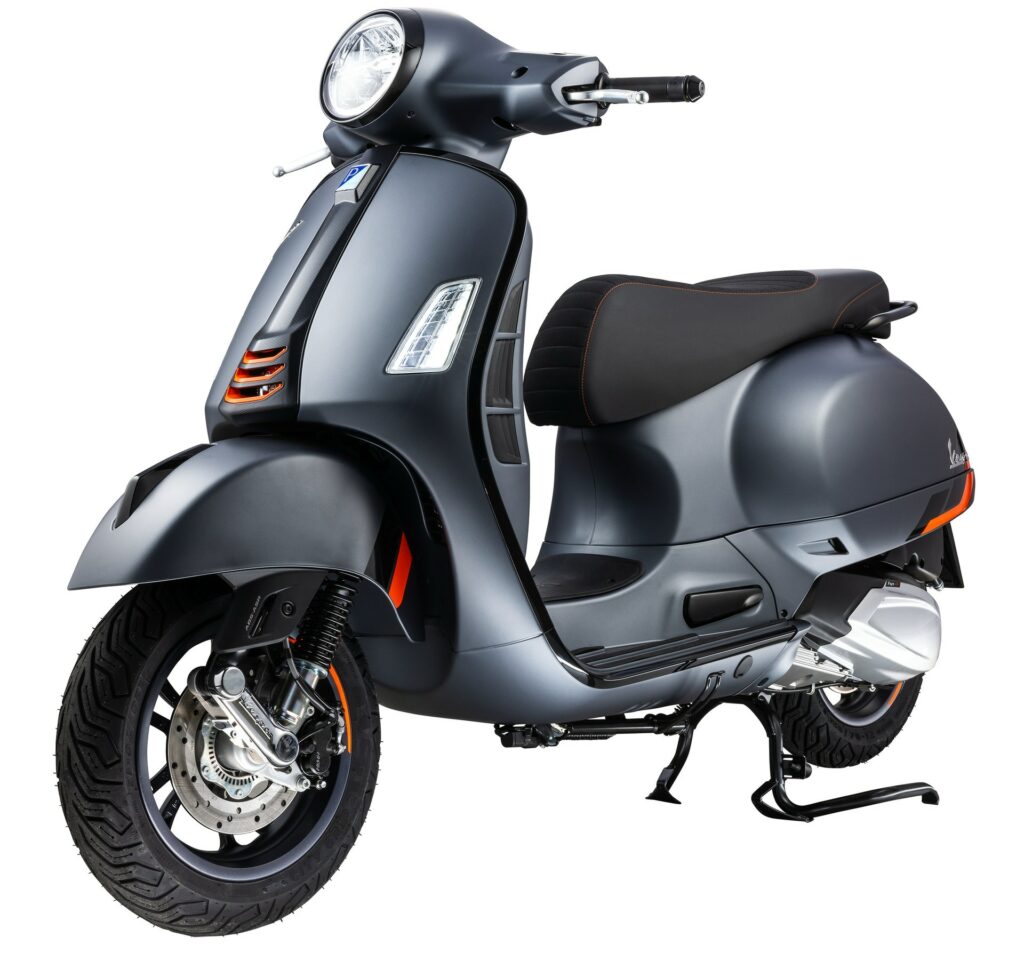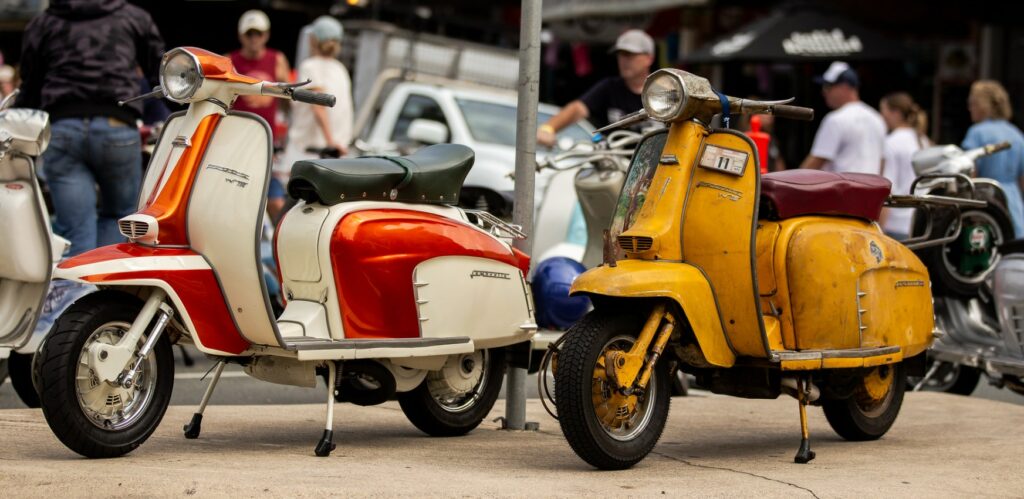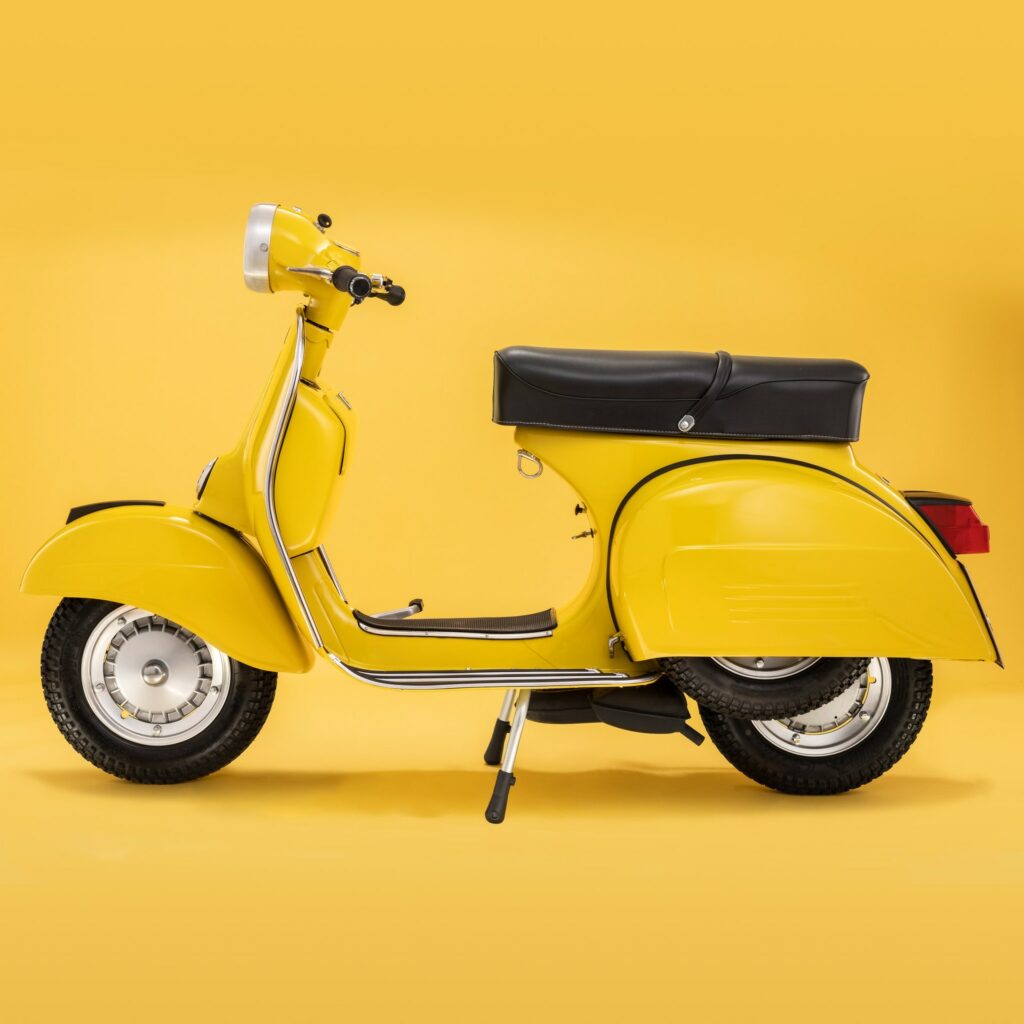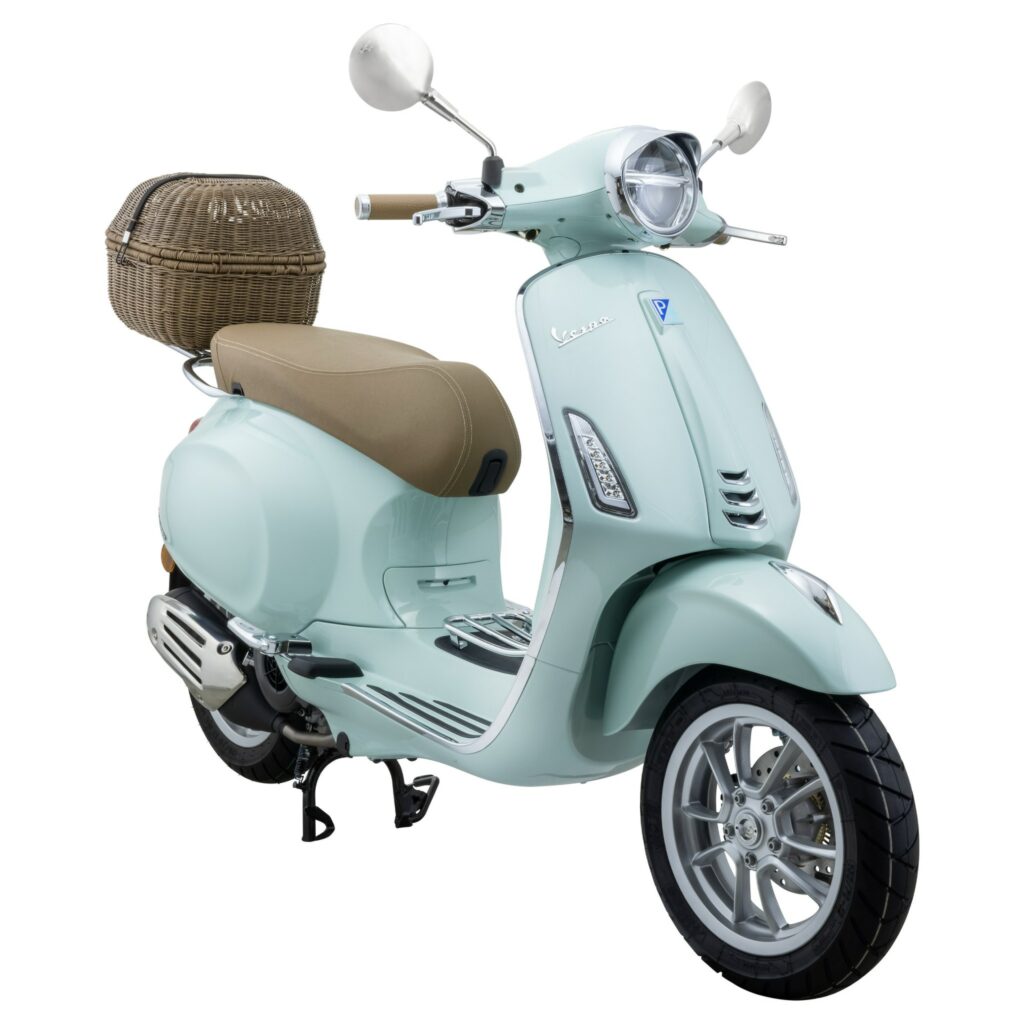Buying a Vespa is a passion project for many – but whether brandnew or used is often a difficult decision. New vehicles straight from the manufacturer are increasingly expensive, and the second-hand market is growing because more and more people are looking for affordable alternatives. Both options have advantages and disadvantages that should be carefully considered. Here you will find an overview to help you make your decision, as well as a checklist for buying used.
The new Vespa: Pros and cons
A new Vespa has many advantages: It offers state-of-the-art technology, is free from signs of wear and tear and comes with a warranty. For you as a buyer, this means maximum safety and the convenience of being able to customize a scooter according to your preferences – be it in terms of color, features or accessories. In addition, new vehicles have lower emissions and meet the latest environmental standards such as EURO 5+.

The biggest disadvantage, however, is the price. A new Vespa can quickly cost over 6,000 euros, which is a big investment for many buyers. In addition, new vehicles lose considerable value in the first few years, which can be a disadvantage when reselling. Nevertheless, the new Vespa remains the perfect choice for those who are looking for a hassle-free riding experience and want to enjoy the pride of being the first owner of a vehicle.
If you would like to do some customizing yourself, there are matching accessories and add-on parts for every Vespa model at SIP Scootershop.

The used Vespa: Pros and cons
The second-hand market for Vespas is diverse – here you will find models with character, history and charm. A used Vespa is generally more affordable and has already been run in, so minor problems are often a thing of the past. With a little luck, you can get hold of a real collector’s item that will increase in value, especially with older models.
But be careful: not every used Vespa is a bargain. Repairs or hidden defects can be expensive, especially in the case of rust or engine problems. Missing papers or unclear vehicle histories are also potential pitfalls. A detailed pre-purchase inspection is therefore crucial to avoid unpleasant surprises.
The right spare parts for all Vespa models are available in the SIP Scootershop at the best quality.

Checklist: What you should look out for when buying used
Here are the most important aspects you should consider before buying a used Vespa:
-
Paint and rust
- Check the paintwork for scratches, dents and subsequently welded-in sheet metal.
- Look for rust, especially under the floor mats, on the shock absorber mount and in the tank. If rust does appear after purchase, it can be treated with rust converter.
-
Steering and suspension
- The handlebars should move easily, without noise or resistance.
- Check the function of the shock absorbers – they shouldn’t sag or bounce.
-
Clutch, brakes and electrics
- Check the cables, brakes and clutch for smooth functioning.
- Check all lights, horn and battery for correct condition.
-
Tires and test drive
- Make sure the tires have sufficient profile depth and check the concentricity of the wheels.
- Take a test drive and test the engine running, clutch, gears and brakes.
-
Vehicle documents and accessories
- Make sure that all documents are present and correct.
- Check the frame number and ask politely about any additional accessories the seller may have.

Conclusion: The decision is up to you
If you haven’t yet been able to decide on a suitable model or are looking for an overview of two-wheelers, you will find a helpful modelbase in the SIP Scootershop.
Whether new or used – every Vespa has its own special charm. A new Vespa offers state-of-the-art technology and a warranty, while a used one often impresses with its character and a lower price. It is important that you take your time, check your options and take a close look when buying pre-owned. With the right preparation, you are sure to find the Vespa that suits you perfectly!



